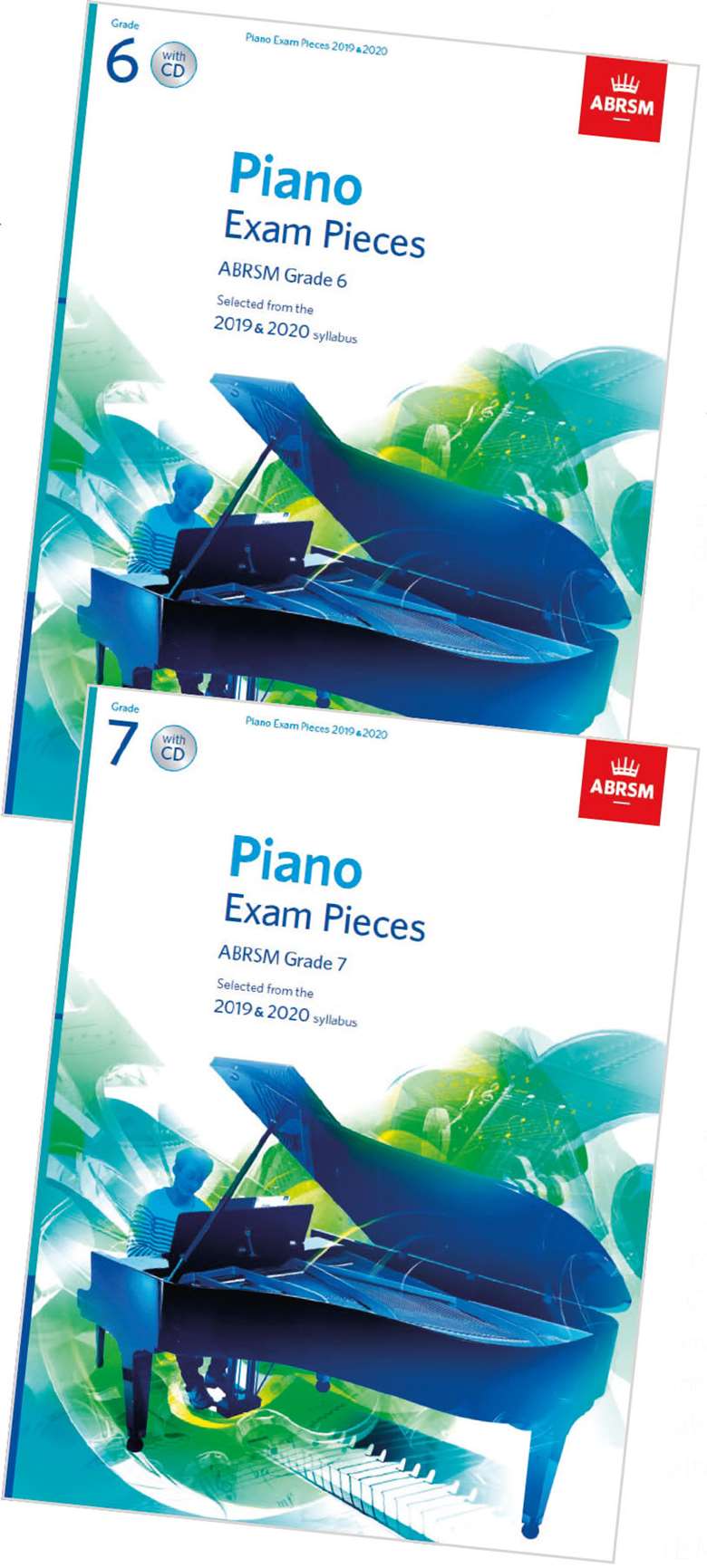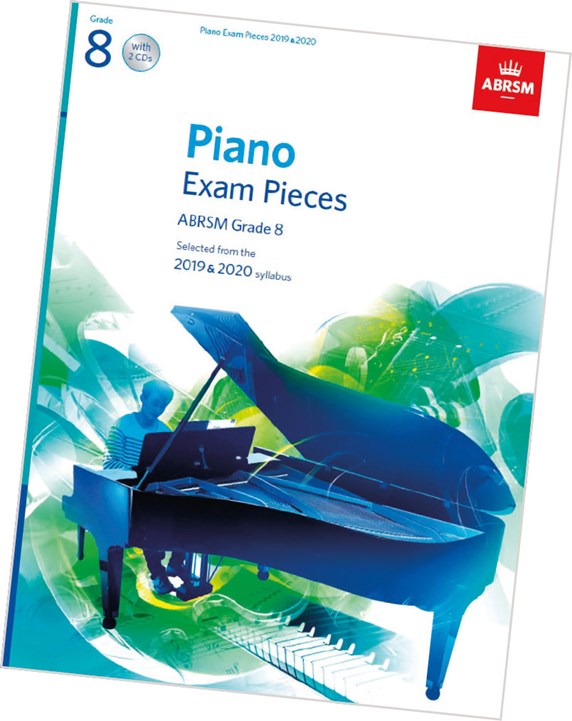Piano Reviews: ABRSM piano syllabus 2019-20, Grades 6-8
Michael Round
Saturday, September 1, 2018
Michael Round reviews Grades 6-8 of ABRSM's new piano syllabus for 2019 to 2020. Grades 1-5 were reviewed in our August issue.

Yes, the syllabus is out, each publication priced up just a little on last year. In-house questions have all been answered, and no doubt those in studios, pubs, common rooms and online forums will begin. Are the pieces too easy, too hard, too obscure or too hackneyed? Have copyrights been cleared? Are minorities adequately represented? Are candidates with small hands catered for? Are the alternative pieces easily available? My colleague Fiona Lau reviewed Grades 1 to 5 in August – here's my own take on Grades 6 to 8.
Back-up
The syllabus is of course available online, and – helpfully for teachers with poor broadband – in print. The whole repertoire is recorded on CD, a highly recommendable way to check on say, ornaments and permissible repeats, a guide to how all the alternative pieces go, and eventually a springboard for lively discussion about the performances. The team of seven pianists responsible mostly manage to steer between virtuoso performance (without discouraging the strugglers) and safe, but dull, plodding. Teachers should remember that many pupils view CDs as obsolete and will need access to the performances online.
Layout
The new front-cover illustration is eye-catching and should offend no-one. Musical texts are guaranteed to be as accurate as human proofreading can make them; page-turns are skilfully arranged and background notes are copious and absorbing. Editing is discreet and mostly comprehensive. Printed fingerings are all worth trying out, though a default finger-legato mindset – useful for early and largely unpedalled music – has persisted into Debussy's ‘Voiles’ (Grade 8) with, in this pedal-bathed texture, needlessly cumbersome results.
Repertoire
The board's enterprise is most praiseworthy. Probably the only pieces guaranteed familiar among the whole of Grades 6 to 8, besides three Mozart sonata movements, will be the Chopin B minor prelude – possibly also the Schubert (Grade 6); a three-against-two Haydn ‘Minuet’; a Mendelssohn ‘Song Without Words’ (Grade 7); Beethoven's Op. 79; and the first Gershwin Prelude (Grade 8). The most exciting of the moderns is the Salter (Grade 8, from Spectrum Five). The Cheryl Frances-Hoad and Peter Dickinson (Grade 7) are practically pastiche and Raymond Yiu (Grade 8) is thoroughly Westernised.
There's no minimalism, I'm glad to say. I know it's popular with pupils, but it tests nothing of a candidate's musicality besides the ability to play any piece's first two bars then stay awake during the rest of it. Minimalism has its place, but it isn't the exam room.
Many teachers, mindful of (or perhaps pressured by) impecunious parents thinking the grade album alone quite enough expense, ignore the alternative pieces completely. This is a pity. We can all learn about repertoire simply by reading their lists – they're ready-graded, of course, and setting pupils varied selections from them makes for inspiring pre-exam pupil-concert experiences. Open-minded teachers may own many of the albums already (Grovlez in Grade 6, Clementi in Grade 8, the same Bach partita in both Grades 6 and 8), not to mention music-room standbys like the Well-Tempered Clavier, the Mozart sonatas, and ABRSM's own Spectrum Five. Here I happily express my grateful thanks to all those publishers able and willing to forward copies of the alternative pieces in time for this review.
Where choice exists, splurging £25.99 (EMB) rather than £4.50 (Bärenreiter) on the Grade 7 Scarlatti will bring you not one but 50 sonatas (one for now, 49 for later). For £10, you can get the ABRSM's Mendelssohn Preludes and Fugues (one is in Grade 8) but Peters’ £20.65 version secures the ‘Three Caprices’, ‘Six Pieces for Children’ and three big sets of variations besides. Grade 6 candidates may opt for the ABRSM's Kuhlau album; teachers should note however that the not-much-dearer Peters includes the current Grade 8 option too. While £15.50 may seem steep for just one Turina item (Grade 8), the Salabert volume containing it contains 22 other attractive pieces guaranteed new to practically all of us. And without prompting, via the Pozzoli Berceuse (Grade 8), who among us would know anything about 20th-century Italian piano music?

Publishers’ contact details are no longer to be found in the printed syllabus, but a list of them may be found on the board's website. In the fast-changing world of music publishing, note that Hal Leonard Europe now take responsibility for titles listed under MDS. The Board's suggested editions are not compulsory: the Wiener Urtext Haydn, for instance, is perfect for scholars but candidates wanting realised ornaments should look elsewhere. Alfred do the Gershwin Preludes (Grade 8) cheaper than the recommended Boosey & Hawkes, likewise the Edition Peters’ Shostakovich Op. 34 (Grade 6). The recommended Soler (Grade 8) album (Faber) is cheaper than Schott's (Eight Sonatas, ED 9183) but is worse edited and awkward to read.
Beware: the correct Grade 6 Michel Legrand arrangement may be found in Wise Publications’ Cocktail Piano as well as the recommended The Music of… album, but the one in Michel Legrand – the Piano Collection cannot be used. Note too that Peters’ Khachaturian ‘Sonatina’ (Grade 7) may only be bought in the Commonwealth: candidates elsewhere must seek out the Boosey & Hawkes or Sikorski. Baroque Keyboard Pieces Book Five, the recommended source for the Grade 8 Handel, may offer varied contents but systematic library-builders may prefer it in the 1983 ABRSM album Selected Works Book Four: The Six Grand Fugues. Seasoned teachers may already own it. As I write, the traditional Edition Peters Grade 8 Anthology is in active preparation. Its 23 components are still being finalised, pending copyright discussions with the ABRSM.
Teaching Notes on Piano Exam Pieces, 2019 & 2020
Andrew Eales, Fiona Lau, Murray McLachlan and Frances Wilson
Four writers have combined to produce the Board's usual booklet of Teaching Notes, around half an A5 page per piece for the early grades, more for the later. This is more humane than one writer doing the lot, and provides a welcome variety of opinion and approach, but their scattering of pieces among contributors precludes any place for an overview of each list (which pieces are easiest? hardest? longest? catchiest?) and their strait-jacketing into three bite-sized chunks per piece (‘Context’, ‘Technical Challenges’ and ‘Performance and Interpretation’) risks other elements falling, as it were, between the cracks.
Each note is self-contained, risking possible duplication of general advice but presumably to cater for teachers too busy or impatient to read the whole book. Discussion ranges from nuts-and-bolts mastery through pictorial imagery to muscular techniques. Careful proof-reading has eliminated all but a very few typos: ‘harmonics’ for ‘harmonies’ may confuse, while a misspelt ‘commodo’ may provoke a few sniggers. Among the alternative pieces there is little said on misprints, alternative editions, ornaments, fingerings, articulations, or places often misread by pupils or which pieces are duds – not surprisingly, given that the parent body selected them. For information on these issues, and more, look out for Music Teacher's own booklet, due out in the coming months.

